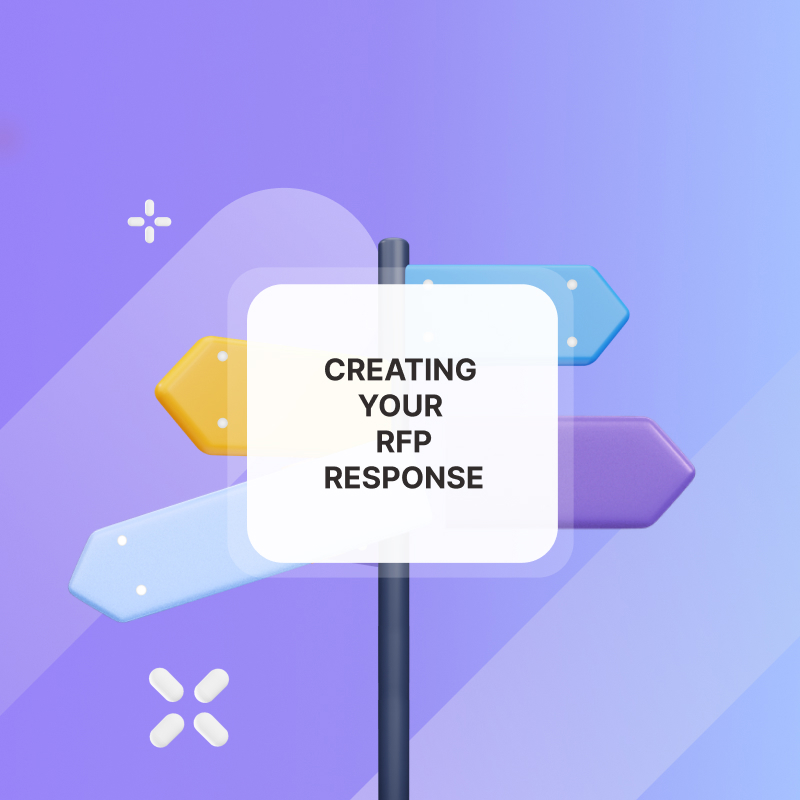
After an optimistic period of engaging in discussions before and during the demo, there could be a period of radio silence from the buying team.
This post-demo period of the sales process can often feel stagnant, causing frustration for sales teams.
However, this is usually the consideration phase. It is a time when the prospect internally evaluates your solution and that of your competitors to see which one aligns most with their needs.
The problem here is that the consideration phase for your buyer has an uncertain duration. Relying solely on emails means you don’t know if they are even paying attention to your sales materials. You also don't know which content interests them and how to follow up promptly.
It is important to utilize buying signals rather than wallow in uncertainty or follow up based on assumptions.
Buying signals can accurately measure a buyer’s interest and intent when set up and monitored properly. You can then make data-backed follow-up decisions and focus your efforts in the right direction.
In this post, we will discuss buying signals, different types of buying signals, and how to measure buying intent.
What Are Buying Signals?
Buying signals are actions, behaviors, or events that indicate a prospect's interest in purchasing your product or service. Recognizing these signals allows you to tailor your follow-ups, prioritize leads, and close more deals.
Buying signals are usually more accurate when prospective customers are already in the sales process.
Why Are Buying Signals Important?
-
By identifying strong buying signals, you can focus on leads most likely to convert, maximizing the efficiency of your sales efforts.
-
Buying signals allow you to tailor your sales process, demonstrating an understanding of the prospect's specific needs at any time.
-
Recognizing interest allows you to proactively build trust, and guide them through the buying journey.
-
Acting on buying signals promptly helps you seize opportunities that can accelerate conversions and shorten the sales cycle.
Types of Buying Signals
There are different types of buying signals;
-Verbal buying signals
-Behavioral buying signals
-Company buying signals
-Questions that show buying intent
-Requests that show buying intent
Verbal Buying Signals
- A clear discussion of needs, challenges, and problems shows that the prospect wants to know if your product is the best solution.
-
Expressing dissatisfaction with their current solution shows that they need a better solution. This also reveals more details about their preferences and expectations.
-
Sharing details of their goals and desired outcomes
-
Interest in future communication
-
Confirming certain benefits shows what they are particularly interested in, or what excites them the most about your solution.
-
Mentioning budget discussions or clear decision-making timelines.
-
Requesting demos, proposals, or case studies.
Behavioral Buying Signals
- Watch relevant content. For example, if they watch your demo video, it could indicate that they would want to take a closer look at it or show other colleagues
-
Attending webinars or industry events you sponsor.
-
Engaging with your social media content or website.
-
Visiting specific content content frequently.
-
Sharing specific content with certain decision-makers
Company Buying Signal
- Raising new funding or announcing expansion plans often increases a company’s budget for acquiring new solutions.
-
Hiring talent for roles related to your solution's functionalities.
While company signals are not a strong indication of buying intent, they could indicate a potential purchase readiness.
Questions That Are Buying Signals
- Asking questions during the demo to learn more about your solution or a certain feature, instead of keeping silent till the end is a sign of interest and a buying signal.
-
Questions about how quickly your solution can be implemented
-
Questions about how quickly they can see results
-
Specific questions about pricing and possible price adjustments
Requests That Are Buying Signals
-
Request to learn more about your company: They likely want to determine your company's financial health because they are interested in your solution.
-
Request to speak with your current customers: This indicates a strong interest and they need proof to validate your product/service.
-
Request for a demo or free trial: This shows they are interested and want to get a feel for your product to ensure they are making the right decision.
Budget signals
When the economic buyer is actively involved in sales meetings or engages well with sales content in your collaborative sales workspace and completes certain milestones in the sales process.
Decision-making signals
They communicate fast and reach out without being prompted to.
Methods For Identifying Buying Signals
Sales reps differ in their approach to the sales process, so they may identify buying signals differently despite having a playbook.
However, these two popular selling methods ensure some structure and alignment within the sales team which could help uniformly track buying intent.
MEDDIC
This is a popular qualification framework used in B2B sales to assess the potential success of a deal early in the sales process. MEDDIC is an abbreviation for the following;
-
Metrics: Key performance indicators used to measure the potential impact of your solution on the customer's business. This could include things like cost savings, increased revenue, or improved efficiency.
-
Economic Buyer: Identify and understand the person who holds the final say.
-
Decision Criteria: Understanding the factors that will influence the buying decision. This could include things like budget, timeline, technical requirements, and competitor offerings.
-
Decision Process: Mapping out the steps involved in the purchase decision will help you anticipate the next steps and tailor your approach accordingly.
-
Champion: Identify an internal advocate within the customer organization who will support your solution. This could be someone who understands the pain points you address and sees the value you offer.
-
Competition: Assessing your competitors. This includes understanding your competitors' strengths and weaknesses, and highlighting how your solution differentiates itself.
How Does The MEDDIC Method Help Identify Buying Signals?
-
Metrics: Analyzing the measurable impact your solution could have on their business (For example, cost savings or increased revenue) helps measure their level of pain and urgency. This level of pain and urgency will help you measure buying intent.
-
Economic Buyer: If the economic buyer is actively discussing budget approvals or decision deadlines, this indicates a strong buying signal.
-
Decision Criteria: Actively researching specific features suggests active consideration.
-
Decision Process: Reaching out to discuss specific stages in the process indicates strong buying intent.
2. Sandler Selling System
The Sandler Selling Method is a consultative, low-pressure approach to B2B sales. It emphasizes relationship building, trust, and understanding the customer's needs before presenting solutions.
This method focuses on collaborative problem-solving and long-term partnerships rather than high-pressure sales tactics.
The Sandler selling system is a seven-step process that includes:
-
Encouraging open and honest communication.
-
Ensuring a comfortable business environment
-
Uncovering problems and their potential impact on prospects' business.
-
Finding out if the prospect is willing to invest the time and resources needed to fix the problem
-
Identifying the prospect's decision-making process
-
Proposing your solution within the budget and in alignment with the prospect's decision-making processes
-
Establish clear next steps to ensure client retention and increase customer satisfaction
How Does The Sandler Method Help in Identifying Buyer Intent
The Sandler selling method helps you identify the following:
-
Challenges, frustrations, and future goals: Verbal signs like expressing urgency, mentioning budget discussions, or dissatisfaction with their current solution can indicate readiness for change.
-
Decision-making process and timeline: Keywords related to budget allocation, or upcoming meetings with key stakeholders during discussions often signal active consideration.
-
The true impact of their challenges: When they open up with detailed descriptions of specific issues, it could indicate a buying signal compared to vague descriptions.
How To Measure Buying Signals With Hubforce
Traditional forecasting models primarily rely on historical data and trends, which can be misleading in the ever-evolving world of B2B sales.
Buying signals provide real-time insights into individual prospects’ behavior and buying intent, leading to more accurate future sales predictions. Accurately tracking buying signals helps you scale an efficient personalized buying experience. It also ensures that sales and marketing efforts are maximized.
You can accurately track and understand buying signals without a data team using a collaborative sales environment like Hubforce.
Hubforce allows you to create personalized digital sales rooms in a few clicks.
Digital sales rooms are customized collaborative sales workspaces where you can automatically structure your sales materials according to the prospect's buying journey.
Its in-built smart analytics help you track buying signals in the following ways:
-
Live notifications and real-time insight into the content your prospects are engaging with the most
-
How many times a particular content was viewed
-
Details of decision-makers who viewed it
-
How many times the content was downloaded or shared
-
Who downloaded or shared them
-
How long was spent viewing each material including the time spent on each page
Hubforce auto-suggests follow-ups accordingly. It gives you a clear insight into the decision-makers and their priorities during the decision-making process.
It can also be integrated with your CRM to increase its effectiveness with real-time data.
Discover what works so that your sales team can focus their energy on other high-impact activities.
















